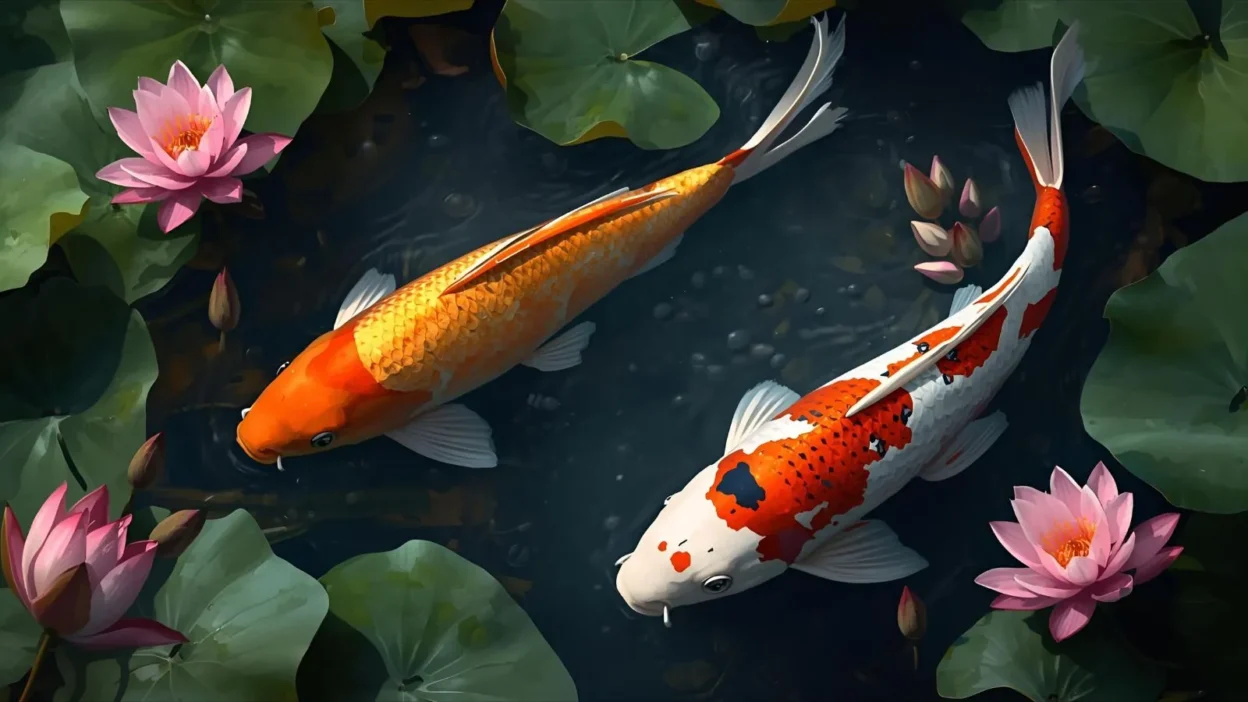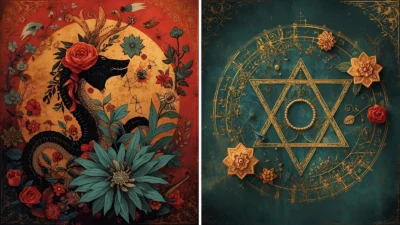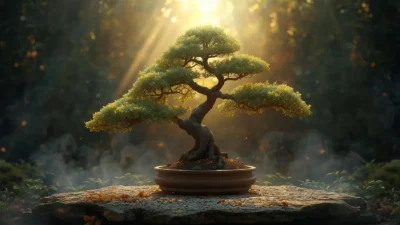It was a quiet afternoon when Maya, overwhelmed by a difficult breakup and job loss, wandered into a serene Japanese garden.
By the pond, she noticed a group of vibrant koi fish gliding through the water. One particularly striking koi—blue and white with hints of gold—caught her eye.
It swam with steady grace, seemingly against the current, undeterred by obstacles. Something clicked inside her.
In that moment, the koi became more than just a fish—it became a symbol of strength, perseverance, and healing.
If you’ve ever felt drawn to koi or dreamed of them, you’re not alone. These stunning fish carry a powerful spiritual and emotional message that has resonated across centuries and cultures. In this guide, we’ll explore the symbolism of koi, how it differs in Japanese and Chinese traditions, and what it might mean for your life journey.
Koi Symbolism Japan
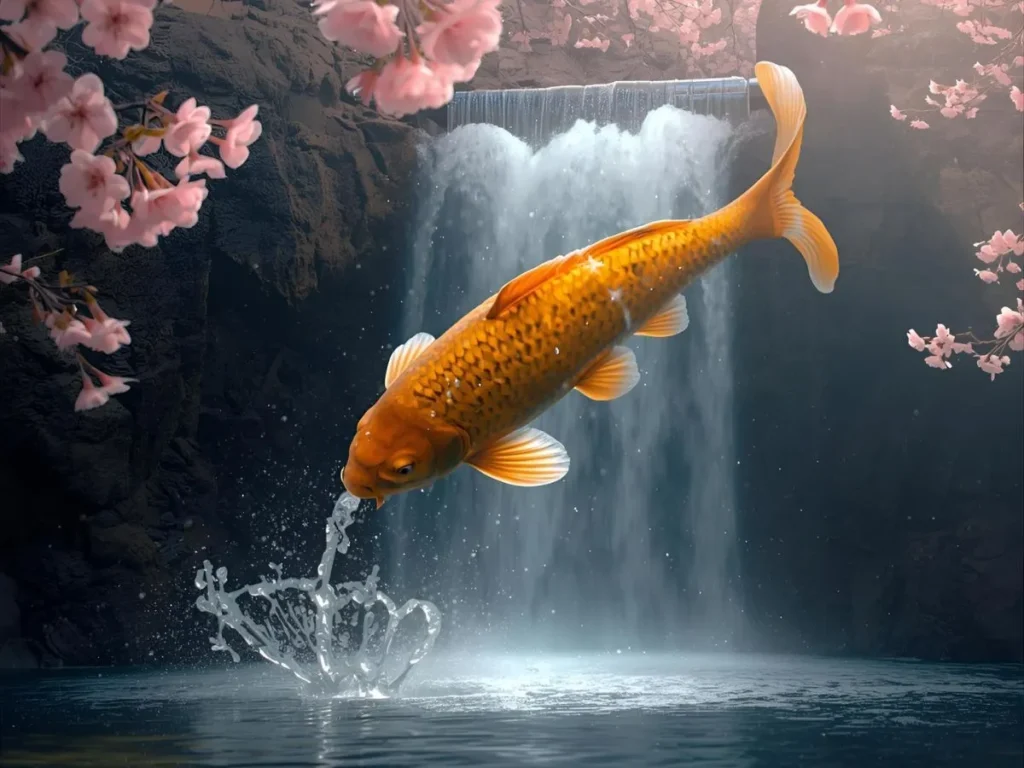
In Japan, koi fish are revered not just for their beauty, but for what they represent. The word koi (鯉) in Japanese can also be a homophone for love or affection, making koi deeply tied to emotional and spiritual meanings.
Most importantly, koi are a symbol of perseverance, courage, and transformation. There’s a famous Japanese legend of a koi swimming upstream in the Yellow River. It faced waterfalls, rocks, and swift currents. After a long struggle, it finally reached the top—where it transformed into a mighty dragon. This story inspires people in Japan to stay strong through hardship and never give up on their dreams.
Koi ponds are often placed in temples and gardens as a reminder to stay resilient and focused on personal growth.
Koi Symbolism Meaning
So, what does koi symbolism mean at its core?
At a spiritual level, koi represent:
- Determination – swimming against currents shows the will to move forward.
- Transformation – much like the koi becoming a dragon.
- Faith and luck – believed to attract good fortune and positive energy.
- Balance and harmony – due to their peaceful nature and flowing movement.
In dreams or animal encounters, seeing a koi may suggest it’s time to trust your path, even if it feels difficult. It’s a spiritual sign that you’re moving toward a breakthrough or rebirth.
Koi Symbolism in Japanese Culture
Koi are a key part of many Japanese traditions, festivals, and art forms. During Children’s Day (Kodomo no Hi), families raise colorful koi-shaped windsocks called koinobori to celebrate the strength and bravery of children. Each koi flag represents a family member, usually starting with the father, then the mother, and then each child.
In Japanese art and tattoos, koi are often drawn swimming upstream to symbolize effort, ambition, and the will to overcome. Their beauty is not only outer—but rooted in their courageous energy.
You’ll also find koi featured in Zen gardens and Buddhist temples, where they represent peaceful reflection, wisdom, and balance.
Japanese Koi Symbolism
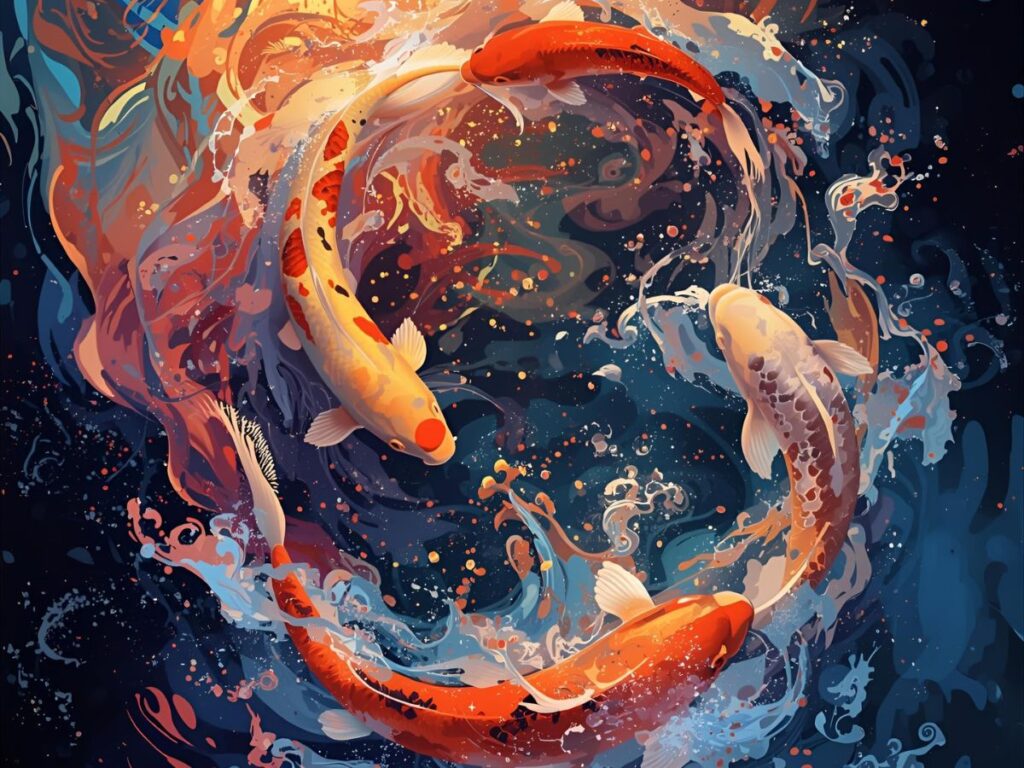
Japanese koi symbolism goes even deeper when you look at koi colors and patterns. Each color has a spiritual interpretation:
- Red koi – symbolizes passionate love, maternal strength, and courage.
- Gold koi – signifies wealth, prosperity, and blessings.
- Black koi – represents overcoming adversity, especially in male figures.
- White koi – symbolizes success in career and new beginnings.
Together, these koi create a living mosaic of emotions and life lessons. Whether seen in a painting or a pond, each koi tells a personal, spiritual story.
Koi Symbolism.
Let’s pause and reflect: why do koi appear in our lives?
When a koi shows up repeatedly—whether in dreams, art, or real life—it may be a sign from the universe urging you to:
- Embrace change and swim through life’s struggles with grace.
- Stay faithful to your inner strength.
- Believe in your ability to rise—like the koi that becomes the dragon.
Koi symbolism speaks directly to the human soul, especially during times of transition. Their steady motion through water reminds us to flow, not force, and let our true purpose rise to the surface.
Koi Symbolism in Japan
Japanese koi are not just ornamental—they are sacred carriers of spiritual values. In shrines and ancient palaces, koi ponds are seen as spaces for quiet introspection and connection to the divine.
Their presence brings calm, clarity, and courage. Monks often meditate near koi to reflect on their inner journey. If you feel spiritually blocked or emotionally heavy, observing koi—or even visualizing them in meditation—can help unlock healing energy.
In modern times, koi are also seen as symbols of family strength, loyalty, and perseverance—values that run deep in Japanese society.
Blue Koi Symbolism
Among the many koi colors, the blue koi holds a unique and powerful meaning. Spiritually, the blue koi represents:
- Calmness in chaos
- Healing from emotional wounds
- Masculine energy and quiet resilience
- Freedom through surrender
Blue koi are often linked to peace after pain, especially for those healing from grief, trauma, or anxiety. If you’ve seen a blue koi in a dream, it may be a divine message that you’re entering a phase of emotional recovery.
In some interpretations, blue koi also connect to fatherhood, protection, and wisdom. They’re gentle yet strong—able to weather storms with quiet confidence.
Koi Symbolism China
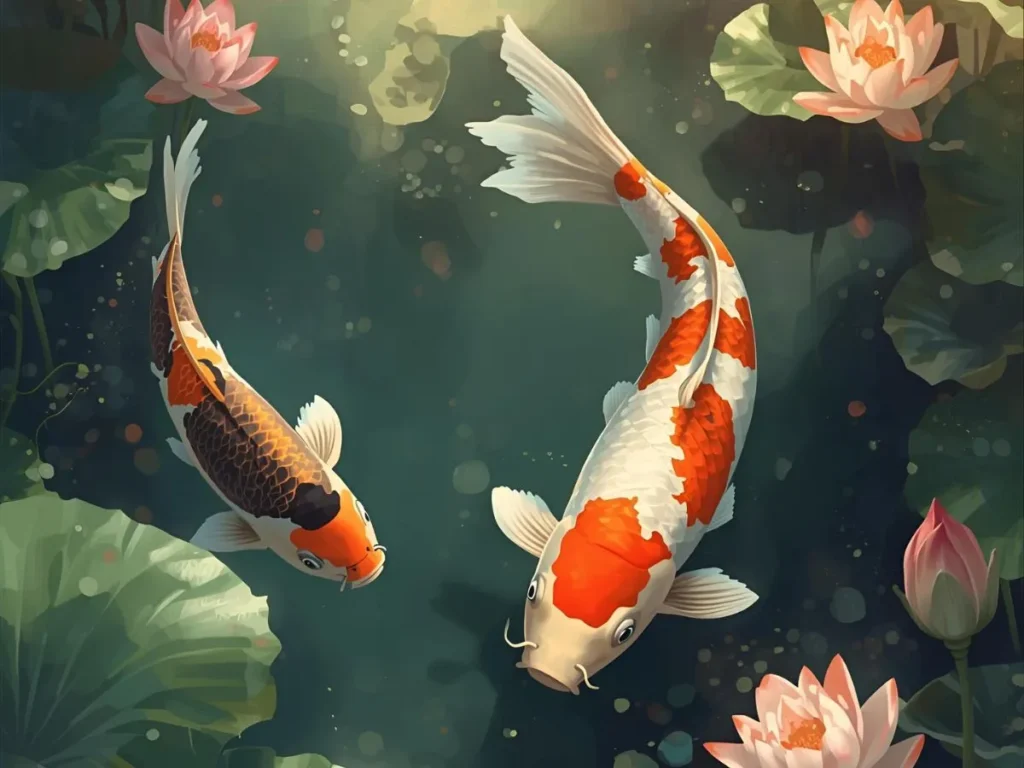
Koi have deep roots in Chinese culture as well, where they are known as “liyu” (鲤鱼). In feng shui, koi bring abundance, success, and harmony to a home or business. A painting or statue of koi is believed to attract wealth and positive chi (energy).
The Dragon Gate legend also originates in China. It’s said that any koi that can leap the Dragon Gate waterfall on the Yellow River will transform into a celestial dragon.
This story made koi a symbol of scholarly success and rising through hardship, especially during the imperial exams.
In marriage and family, two koi swimming together represent devotion, unity, and eternal love.
Koi Symbolism Tattoo
Koi tattoos are some of the most spiritually charged and visually stunning body art. In tattoo symbolism, koi represent:
- The strength to overcome personal battles
- The journey from struggle to triumph
- The will to keep swimming, no matter what
The direction of the koi in the tattoo also matters:
- Upstream – you’re still fighting, growing, evolving.
- Downstream – you’ve overcome your challenges and are now in a state of peace.
Color also plays a role in koi tattoos. A red koi could show passion or heartbreak. A black koi may represent a personal struggle or transformation. A blue koi might symbolize deep healing or a tribute to a father or mentor.
Koi tattoos are not just art—they are sacred symbols worn with purpose and pride.
Real-Life 3 Short Scenarios
1. A Breakup and a Blue Koi
After her fiancé called off their wedding, Zara felt like her world had collapsed. One day, she visited a friend’s koi pond and noticed a gentle blue koi circling the edge. It swam alone but with grace. That night, she dreamed of the same fish. She woke up with a sense of calm. She later got a blue koi tattoo on her wrist to remind herself: healing is a journey, not a race.
2. The Job Loss and the Upstream Tattoo
Daniel was laid off after 10 years of work. While hiking near a Japanese temple, he noticed koi swimming upstream in a small stream beside the path. Inspired, he decided to start his own business. Years later, he got a tattoo of a koi going upstream—a symbol of his rebirth through struggle.
3. The Dream That Changed a Life
Lena had recurring dreams of a golden koi guiding her through murky waters. She felt lost in life and unsure of her purpose. The dreams nudged her toward spiritual practices. Eventually, she became a reiki healer and often visualizes the koi when working with clients. To her, the koi is a spirit guide.
FAQs
1. What does it mean if I dream about koi fish?
Dreaming of koi often signals emotional healing, transformation, or a coming success. The color and direction of the koi in your dream can provide deeper insight.
2. Are koi fish good luck spiritually?
Yes! In both Japanese and Chinese traditions, koi bring prosperity, good fortune, and strength. Spiritually, they are signs of hope and endurance.
3. What do two koi swimming together symbolize?
Two koi—especially a red and a black koi—represent balance, love, and harmony. They’re also symbolic of soulmate energy or twin flame unions.
4. Can koi symbolism help during emotional hardship?
Absolutely. Koi teach us to keep moving through pain, to embrace transformation, and to trust that we are evolving into something more powerful—just like the koi that becomes a dragon.
5. Is there a spiritual difference between koi colors?
Yes. Every koi color carries unique spiritual messages. Red is courage, blue is healing, black is overcoming pain, gold is wealth, and white is new beginnings.
Conclusion:
The koi fish, in all its quiet beauty and graceful determination, teaches one of the most soulful spiritual lessons of all: keep swimming.
Whether you’re struggling with grief, searching for purpose, or rebuilding your life, koi symbolism offers comfort and clarity. It reminds you that every obstacle is a chance to rise. Every scar is proof of survival. And every moment of stillness is a chance to begin again.
So the next time you see a koi—on paper, in water, or in a dream—remember: you too are capable of transformation, strength, and grace. Just like the koi, you were made to rise.

